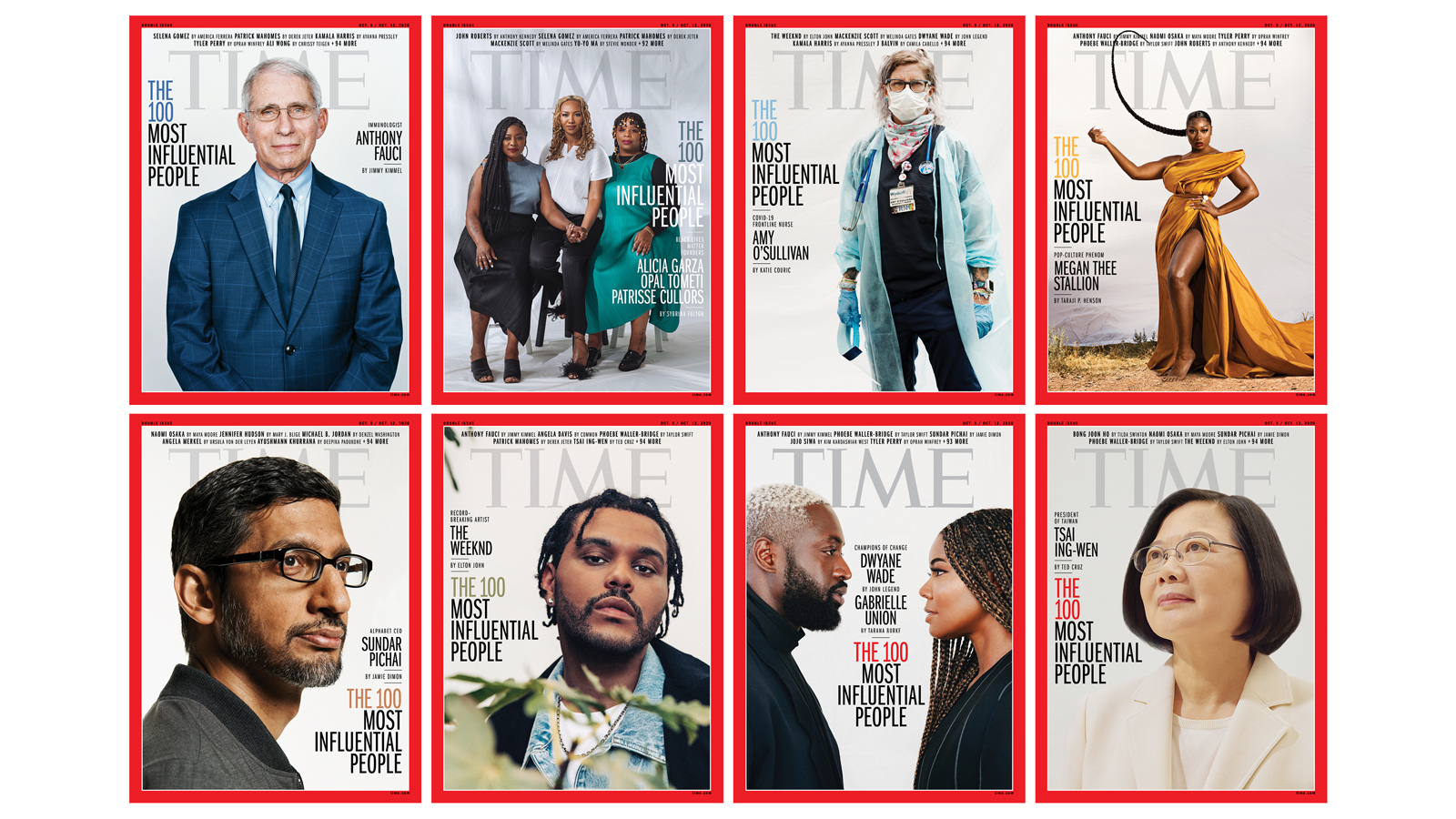
We’ve been doing the TIME 100 list of the world’s most influential people for nearly 20 years. But there has never been a year like this. A year of multiple crises, all over the world, all at once.
And so this year’s list looks far different than any of us could have predicted just six months ago. The TIME 100 has always been a mirror of the world and those who shape it. While you will certainly find people who wield traditional power on this year’s list—heads of state, CEOs, major entertainers—it also includes many extraordinary, lesser-known individuals who seized the moment to save lives, build a movement, lift the spirit, repair the world.
There are, for example, a record number of doctors, nurses and scientists. Among them: German infectious-disease specialist Camilla Rothe, who helped document that this coronavirus could be transmitted by people without symptoms; Chinese researcher Zhang Yongzhen, who mapped in less than 40 hours the genomic sequence of SARS-CoV-2 and was the first to share it publicly; New York nurse Amy O’Sullivan, who treated the first patient to die from COVID-19 in the state, contracted the virus herself and was back at work within a few weeks; and of course Anthony Fauci, who became in many ways America’s doctor.
The list also includes many activists fighting for equality, including Black Lives Matter founders Alicia Garza, Patrisse Cullors and Opal Tometi, who helped build an international movement for racial justice; and Arussi Unda, a feminist leader who helped spearhead a national strike in Mexico to protest gender violence.
Fifty-four of the people on the list are women, more than ever before. Not only were many of the biggest grassroots movements of the year led by women, so were many of the world’s most effective responses to COVID- 19. As Texas Senator Ted Cruz writes of Tsai Ing-wen, the President of Taiwan, where fewer than a dozen people (out of 23 million residents) have died of the virus, “the virus can be controlled—without emulating China’s drastic policies.”
As a rule, the TIME 100 focuses on the living, but looming large over this year’s list is the impact of individuals such as Ahmaud Arbery, George Floyd, Breonna Taylor and Tony McDade, whose killings galvanized a reckoning around police brutality and systemic racism;
Aimee Stephens, whose case led to a historic Supreme Court decision protecting the rights of LGBTQ Americans; and Li Wenliang, the Wuhan physician who tried in vain to warn Chinese officials about the coronavirus and later died of it. The issue also includes a memorial to Justice Ruth Bader Ginsburg, including the tribute that fellow Justice Antonin Scalia wrote when she was on the TIME 100 in 2015.
With our staff still working remotely, the process of putting together this year’s TIME 100 was also unlike anything we’ve ever experienced. Led by TIME 100 editorial director Dan Macsai, it is the result of many hundreds of Zooms and Google Meets among many dozens of our global staff, as well as recommendations by TIME 100 alumni.
“We see the TIME 100 as more than a list,” says Macsai. “It’s a community of hundreds of leaders from across the years and around the world whose visions can guide us and whose achievements can bring us hope.”
We invite you to be part of the TIME 100 community as well, through our regular TIME 100 Talks series and other special events. You can sign up for regular updates at time.com/talks-email
This is a year of unimaginable challenges, but it is also an opportunity to re-evaluate and rebuild. I hope you’re as inspired as I am by the extraordinary TIME 100 community. Their work challenges each of us to wield our own influence toward a world that is healthier, more resilient, more sustainable and just.
More Must-Reads from TIME
- Cybersecurity Experts Are Sounding the Alarm on DOGE
- Meet the 2025 Women of the Year
- The Harsh Truth About Disability Inclusion
- Why Do More Young Adults Have Cancer?
- Colman Domingo Leads With Radical Love
- How to Get Better at Doing Things Alone
- Michelle Zauner Stares Down the Darkness
Contact us at letters@time.com